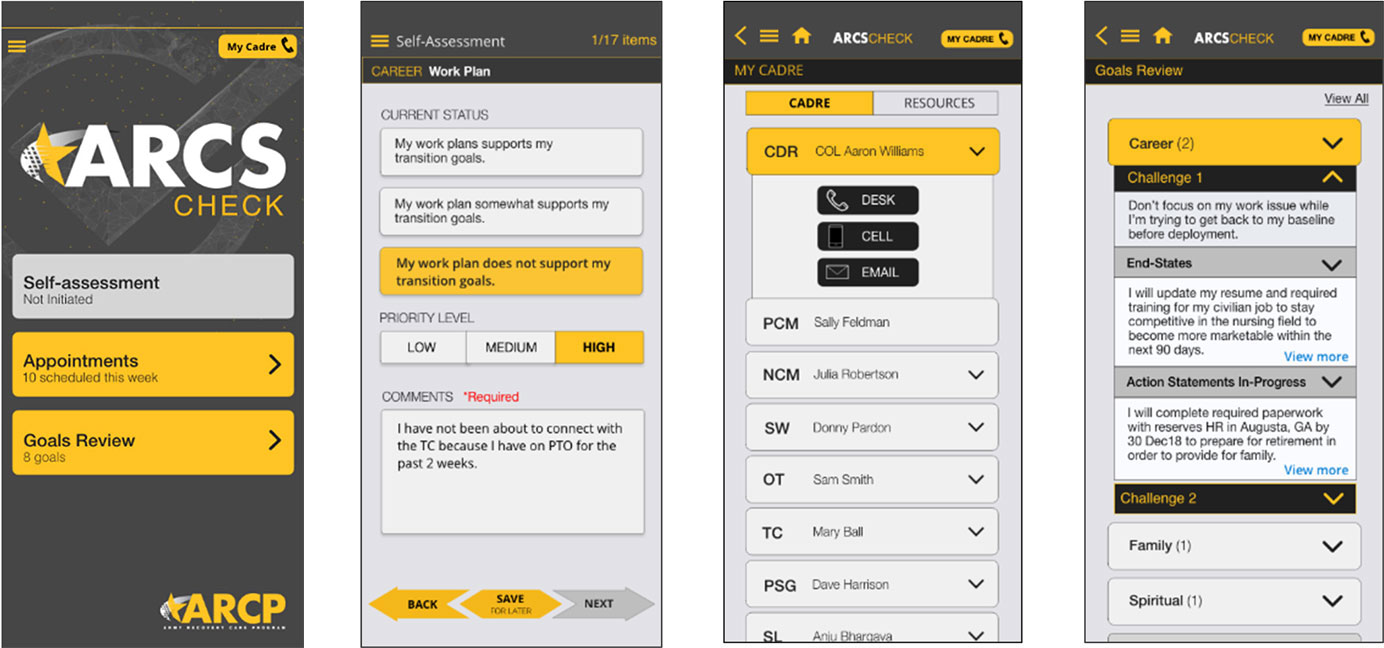DHIC Utilizes MHCE to Assist Soldier’s with Comprehensive Recovery Plans
September 30, 2021 | Download PDF
The U.S. Army Medical Command’s (MEDCOM) Army Recovery Care Program (ARCP), is the program where the Army’s Wounded, Ill and Injured (WII) Soldiers go to heal and transition. Currently, the ARCP includes 14 discrete Soldier Recovery Units (SRU). These units replaced the Warrior Transition Units (WTUs) and focus on supporting complex case management and remote medical management of Reserve and National Guard Service Members who are healing at home while they go through the process of reaching a medical retention determination point.
As part of the process of recovering in the ARCP, Soldiers complete what is known as the Comprehensive Recovery Plan (CRP). It is a plan of action that focuses on the Soldier’s priorities by developing focused goals and it is meant to empower them to be active members of their transition.
The goal of this project is to expand access to the CRP self- assessment through a secure interface on the Soldier’s personal mobile device. To achieve this goal, DHIC leverages the existing, Mobile Health Care Environment (MHCE) system, established by TATRC. As a government system, MHCE maintains all proper government information technology credentials, including, but not limited to, multi-factor authentication, an Authority to Operate and Privacy Impact Statement.

DHIC began its long-standing relationship utilizing the MHCE with the Warrior in Transition command in 2009, with the deployment of the mCare application at five Community Based Warrior Transition Units to conduct a nine month randomized controlled trial at these sites. mCare is the secure, mobile application arm of TATRC’s own MHCE. The success from the previous efforts lead to a trajectory where the CRP interfaces with Soldiers on their own mobile devices.
An MOU was signed in August 2018 between TATRC and the WTC that launched this ARCP CRP project. Currently, the MHCE system / mCare app exchanges data with the ARCP system through this Representational State Transfer Application Programming Interface (REST API). The REST API based data exchange makes the current CRP self-assessment data accessible to the Soldier, who can then edit and update information back to the ARCP system through the mCare app.
The ARCS Check app was developed and nested within the existing mCare application to provide the user interface most closely resembling the desktop interface of the CRP. This allows the app to leverage the mCare / MHCE technology and security features. Lastly, the MHCE provider portal will be used to create user accounts, but user data, including CRP responses, cannot be stored or accessed from that portal to help ensure a Soldier’s data privacy and integrity.
The CRP is a dynamic plan of action focused on the Soldier’s priorities to comply with their medical and military responsibilities. As part of the ARCP, it supports Soldiers through their medical recovery and potential transition from the military and is a key element of such. Currently, the app is undergoing alpha testing internally with our stake holders, but the goal includes initiating a proof of concept effort in 1-3 SRUs. This effort will inform the decision to expand other elements of the CRP into this mobile application, and will determine if in fact this app increases access and improves self-assessment completion rates. This project is funded by the core Program Objective Memorandum funding for the MHCE system.
Mr. Michael H. Mobley, CIO, Chief, Infrastructure Support Division MEDCOM, ARCP stated, “I definitely look at our collaboration over the past few years and think it will benefit our population and I can see the possibility for further expansion of our capabilities and how it will positively affect readiness.”
For more information on the FOXTROT initiative, please contact Ms. Jeanette Little at: jeanette.r.little.civ@mail.mil.
This article was published in the April 2022 issue of the TATRC Times.